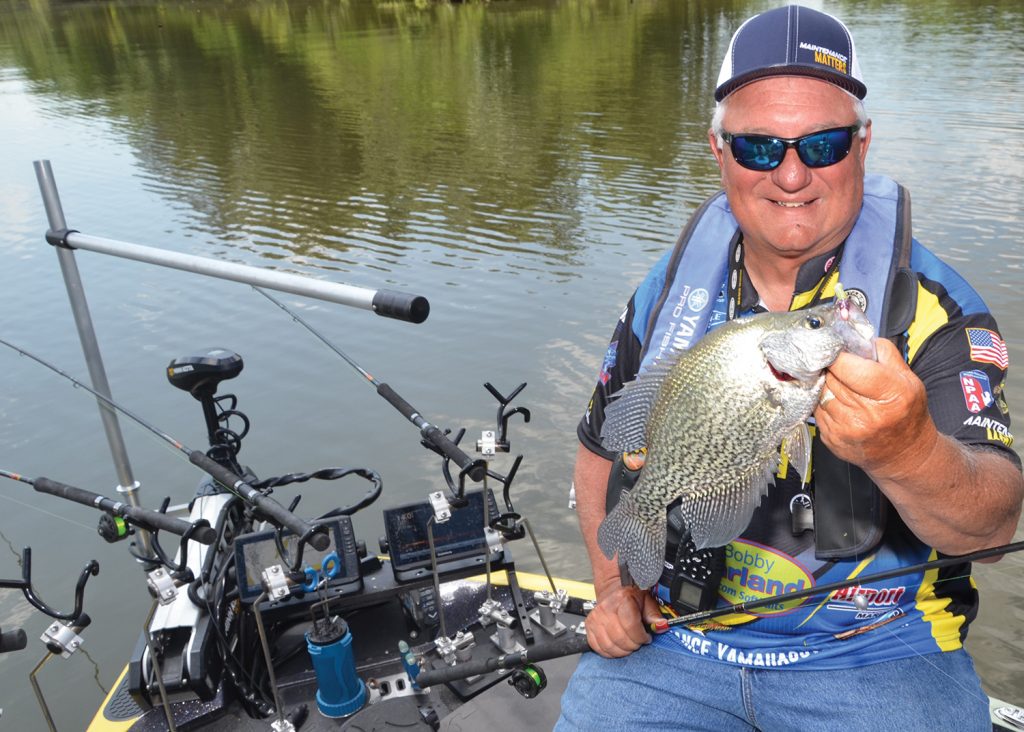Anglers used depth finders for decades, but with technology available today, fish can’t hide.
Depth finders, also called fish finders, grew out of the sonar technology used for anti-submarine warfare during World War II. Essentially, a transducer shoots sound waves through the water. When those waves hit a solid object, they “echo” back to the receiving device on the unit. The unit then processes the data and displays an image on a screen for anglers to see.
Sonar technology advanced giant leaps since the old flasher units available decades ago. Today, units can do so much more than simply locate the bottom of a lake or river. Many high-tech units can now display incredibly detailed information about what lurks below. Anglers can even look at fish swimming around a brush pile or other structure and target a specific one.
On a recent trip to the Alabama River in Elmore County, I had an opportunity to experience the Garmin Panoptix LiveScope system. While this technology created an image just by sound, we could “see” individual fish in real time. On the screen, catfish looked like catfish and crappie looked like crappie complete with moving fins and tails swishing back and forth instead of just an electronic blip. It looked almost like a video.
“Garmin LiveScope technology is forward-looking sonar that’s refined to the point where we can actually see individual fish moving around,” says Gerald Overstreet Jr., a professional crappie angler and guide from Gainestown. “We can see individual fish and identify many different species in the water by their shapes. It’s really changed the way many people fish.”

With the transducer mounted on the trolling motor, the beam goes in whichever direction the motor points. I found it very confusing at first. A fish observed on the right side of the screen wasn’t necessarily swimming to the right of the boat. Everything depended upon the direction the transducer faced at that moment. However, pros accustomed to using this technology could easily locate individual fish they want to catch and drop lures almost on their heads.
“It can be disorienting at first and takes some practice getting used to it,” says Dan Dannenmueller, a professional crappie angler from Millbrook. “We’re used to seeing left is left and right is right. Until people get the hang of it, they have to bend their brains around it. The technology gives the number of feet away from the transducer, but what’s on the screen is not necessarily the direction of the fish from the boat.”
Experienced pros like Overstreet or Dannenmueller can usually target any fish they wish to catch by watching the bait as it sinks or runs through the water, even though the true direction of movement could differ greatly from the screen image. Once people figure out exactly what they see, and more importantly, where they are looking, they can maneuver a bait close to any fish they want to catch and even watch it bite.
“LiveScope has enhanced my fishing because now I don’t have to guess where the fish are,” Dannenmueller says. “When we get to a brush pile and find out where fish are relating to that cover, I place rods in holders to get baits right on the fish. I don’t need to use as many rods as before. We can see where the bait is hanging in the water and see fish come up and hit it. Sometimes, we get so glued to the screen watching fish come up and hit the baits that we forget to set the hook!”
Locating fish does not automatically mean catching them. Anglers still need to convince them to bite their offerings. Sometimes, anglers can watch a large crappie approaching a bait and even gingerly tasting it. An angler only relying upon the sensitivity of the rod and line might never know a strike occurred.
Anglers who find fish that refuse to bite could mark that place. Let that spot rest a while and try again later. When approaching the spot again, use the trolling motor sparingly and only for directional control. Shut it off at a distance. Make long casts to the honey hole.
Anglers can use this type of technology to catch crappie and practically any other species. The Garmin Panoptix LiveScope sells for around $1,500, but anglers will also need a sonar unit to display the images and a trolling motor. Good sonar units start at around $300 but could cost thousands. Pick the one that works best for you and your budget.
John N. Felsher is a professional freelance writer who lives in Semmes, Ala. He also hosts an outdoors tips show for WAVH FM Talk 106.5 radio station in Mobile, Ala. Contact him at j.felsher@hotmail.com or through Facebook.





